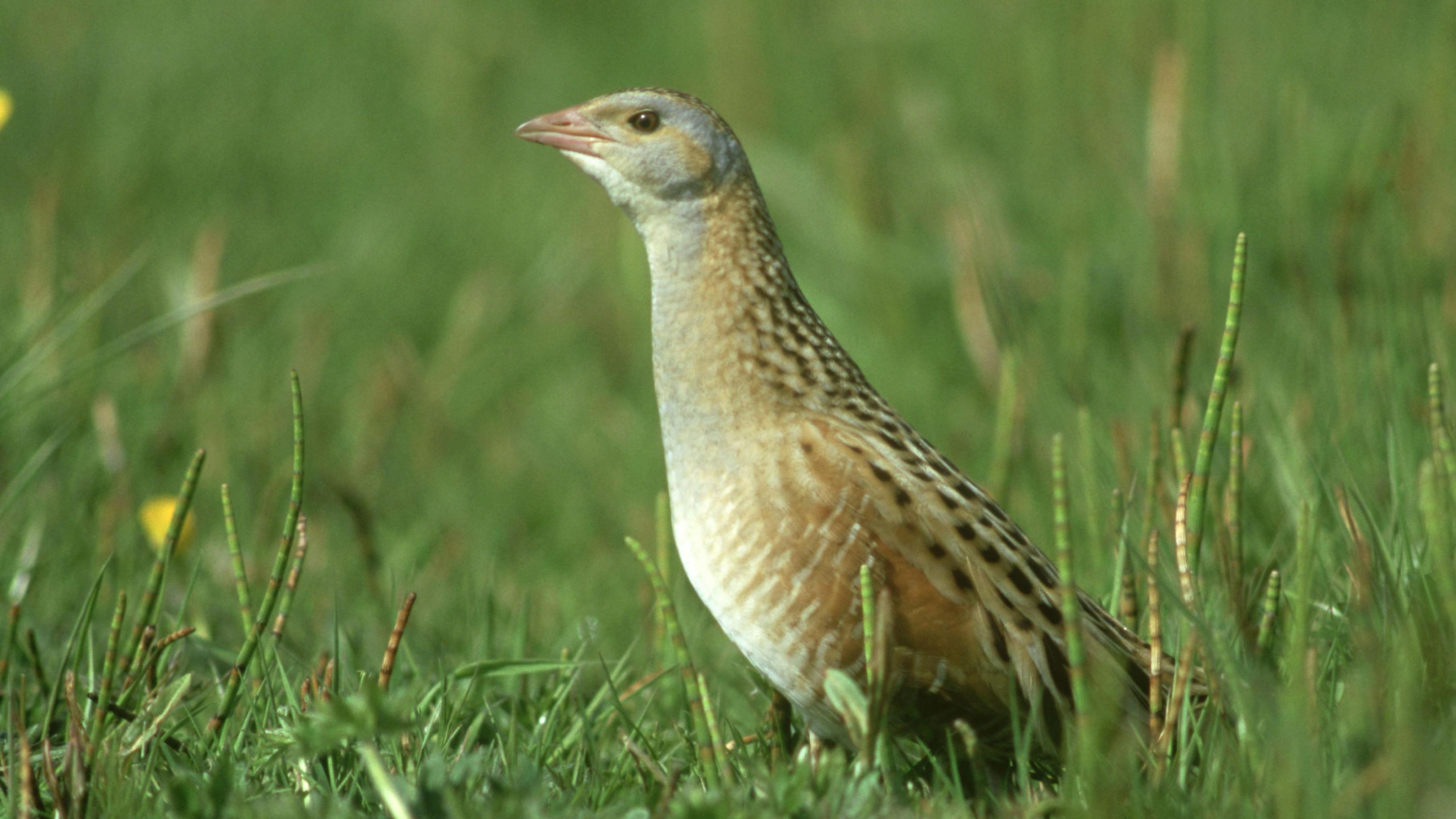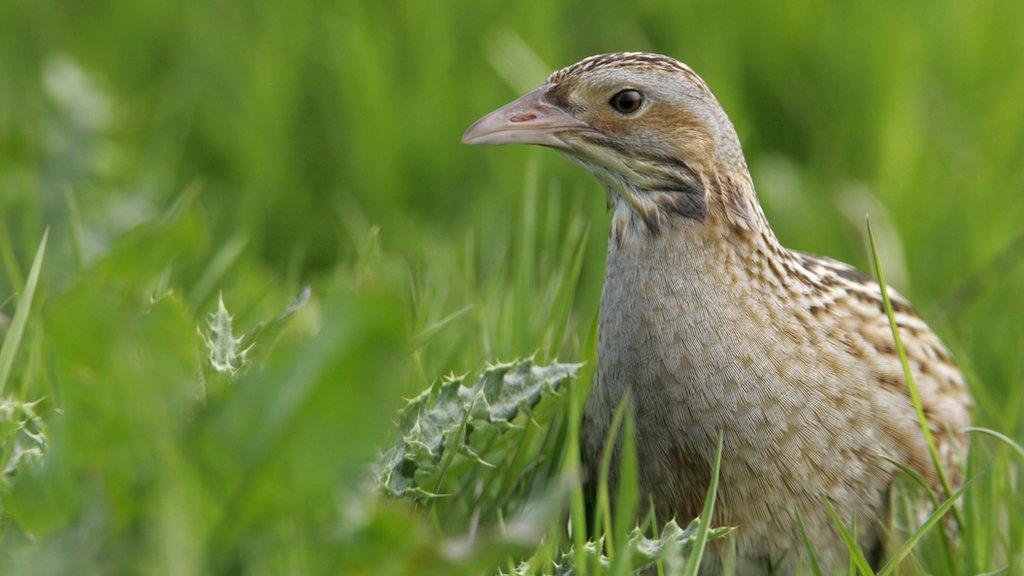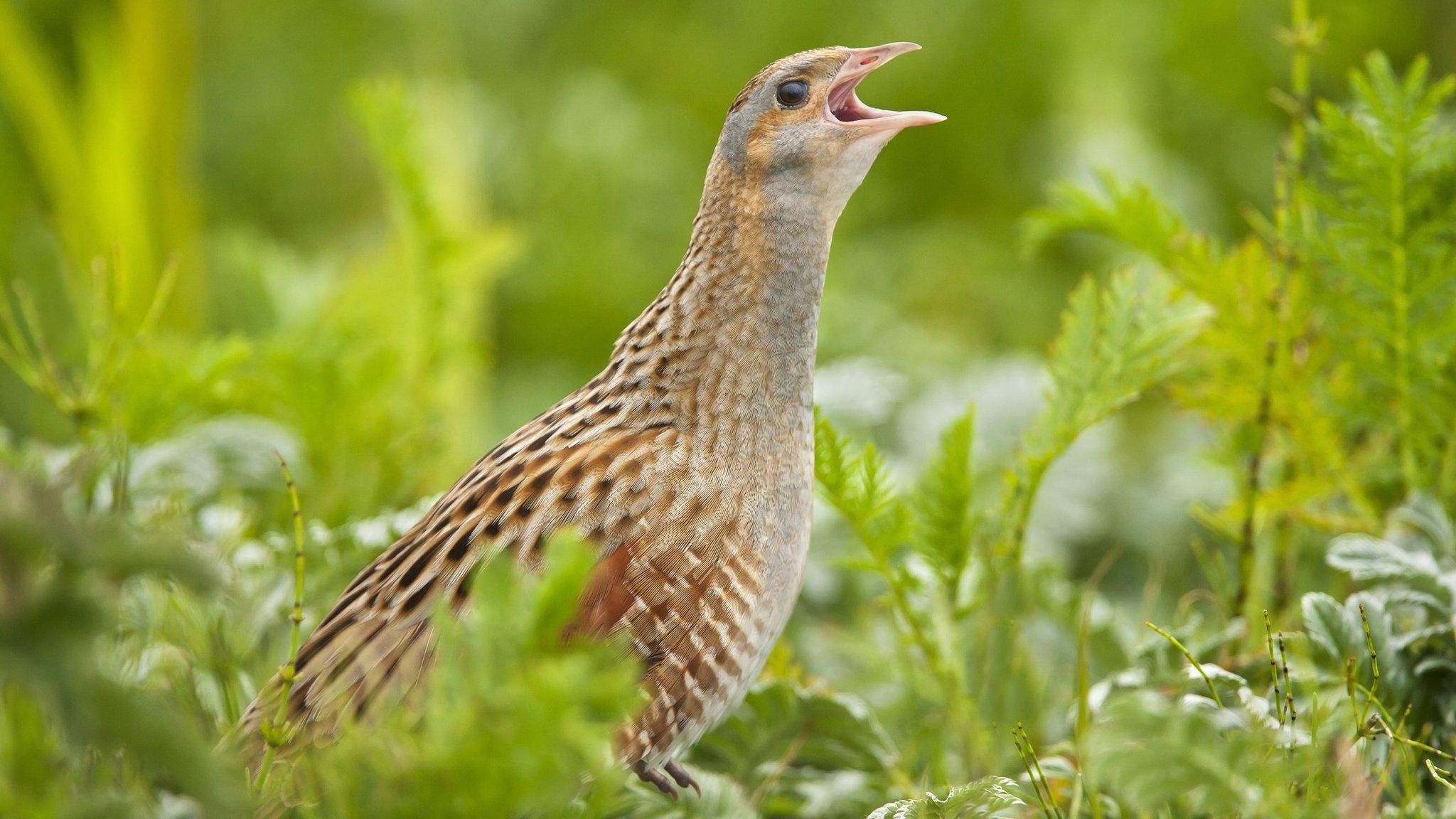Corncrake has 'promising' population increase on isle of Canna

The NTS said 12 to 14 calling mates had been found on Canna
- Published
The population of the corncrake, one of Scotland's rarest birds, has seen a "promising" increase on the isle of Canna, the National Trust for Scotland says.
A survey on the small island in the Inner Hebrides found 12 to 14 calling mates compared to one or two in previous seasons.
Corncrakes have been in decline due to intensive agricultural methods and are one of 26 priority species listed by the trust.
The National Trust for Scotland (NTS) said the "buoyant" population can be attributed to new farming practices that support conservation.

The island has five designated farmland areas for corncrake
NTS ranger Tom Allen said: “Canna farm is a great example of prioritising both the production of high-quality livestock and creating a haven for wildlife and achieving success in both.
“We’re really heartened by the success of corncrake on our farmland, and we hope this is a sign that things are moving in the right direction.
Corncrakes migrate from Africa to breed on islands including Lewis, Harris, Mull, Orkney and parts of the north-west Highland coast and Argyll.
The birds are counted by listening for the call of males.
The isle of Canna has five designated areas of farmland for corncrake.
NTS said it aims to increase the corncrake population to 50 calling males, which would account for approximately 6% of the current UK population.
NTS's Plan for Nature, external outlines six habitats and 26 species prioritised for conservation.
Angus Murray, Canna operations manager, said the methods of farming on the island are vital to successful conservation.
He said: “We care for 76,000 hectares of countryside in Scotland and with our Plan for Nature, we have a clear focus on where to concentrate our efforts."
Related topics
- Published25 September 2019

- Published11 October 2018
